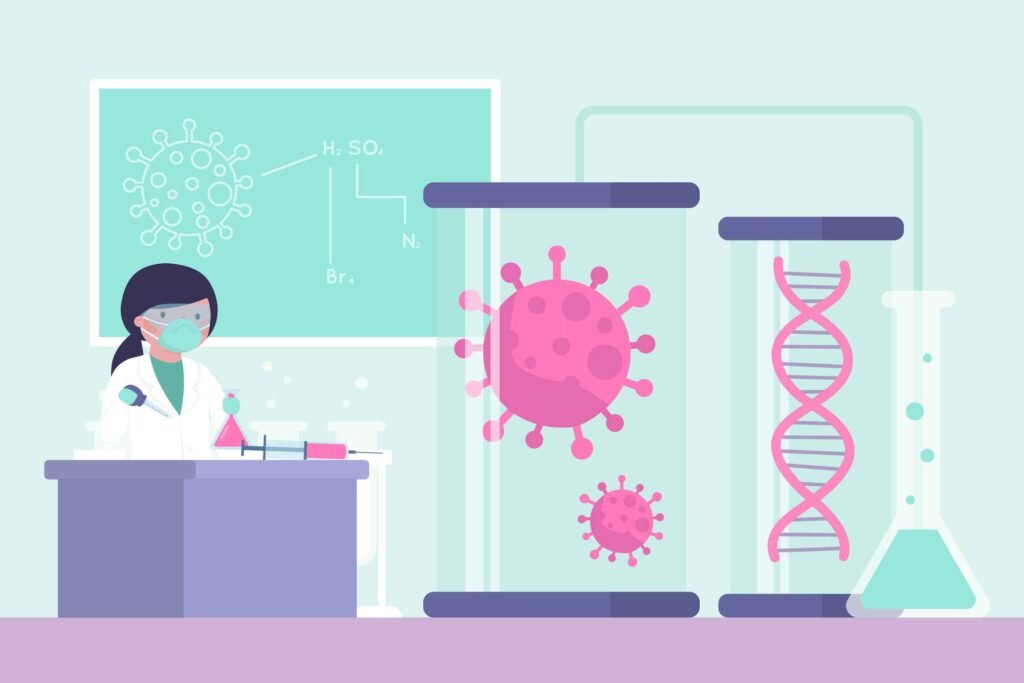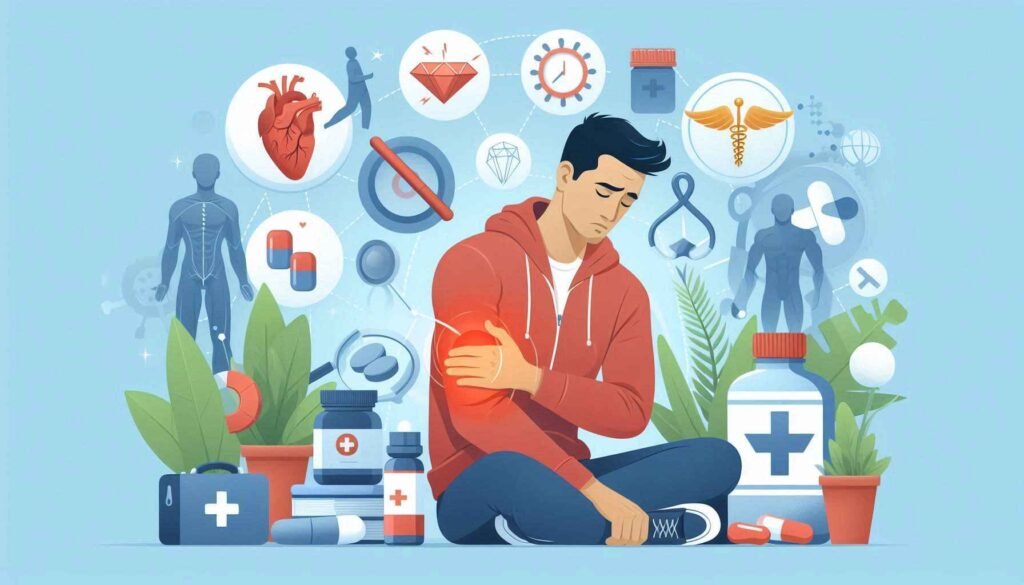
When it comes to relationships, intimacy plays a key role in connecting with your partner. However, staying informed about safe sex practices is vital for ensuring both your health and the health of your partner. Whether you’re starting a new relationship or are looking to refresh your knowledge, understanding safe sex is essential for enjoying intimacy without fear.
This comprehensive guide to safe sex practices will cover the best ways to protect yourself from sexually transmitted infections (STIs), discuss contraceptive options, and offer tips to maintain a healthy, responsible sexual lifestyle.
1. What Is Safe Sex and Why Is It Important?
Safe sex involves taking precautions during sexual activity to prevent the spread of STIs and avoid unplanned pregnancies. It means using the right methods, like condoms or dental dams, having open and honest conversations with your partner, and getting regularly tested.
Why is it important? Because STIs can have significant effects on your health, including infertility, chronic pain, or even life-threatening complications. Safe sex practices also build trust between partners and foster open communication about sexual health.
2. Condom Use: Your Best Defense
Condoms are the cornerstone of safe sex. They provide effective protection against most STIs, including HIV, and they help prevent unintended pregnancies. Whether you use male or female condoms, proper usage is crucial to ensure effectiveness.
- Choose the Right Type: Latex condoms are the most widely recommended because they are highly effective in preventing both pregnancy and STIs. For those with latex allergies, polyurethane or polyisoprene condoms are good alternatives.
- Check Before Use: Always check the expiration date on a condom and examine it for any visible signs of damage. Avoid storing condoms in places exposed to heat or friction, as this can weaken the material.
- Proper Usage: Be sure to pinch the tip of the condom before rolling it down to remove any air, and use water-based lubricants to reduce the risk of tearing.
Pro Tip: Using two condoms at once, often called “double-bagging,” does not offer more protection. In fact, it increases friction, which can lead to breakage.
3. Dental Dams for Oral Sex
For those who engage in oral sex, dental dams provide protection from STIs, including syphilis, gonorrhea, and herpes. A dental dam is a thin piece of latex that acts as a barrier between the mouth and the genital area, reducing the risk of infections that can spread through mucous membranes.
How to Use a Dental Dam:
- Place the dental dam over the genital area or anus before performing oral sex.
- Use a flavored dental dam to make the experience more pleasant, if desired.
- Do not reuse a dental dam, and make sure to dispose of it properly after use.
4. Communication with Your Partner
Safe sex is not just about physical barriers—it’s also about effective communication. Talk to your partner about your sexual health, boundaries, and expectations before becoming intimate. Being transparent about your STI status and agreeing on contraception methods is crucial for mutual safety and comfort.
Tips for Open Communication:
- Choose the Right Time: Bring up the topic when you are both comfortable and in a private setting, rather than in the heat of the moment.
- Use “I” Statements: This helps prevent your partner from feeling blamed. For example, “I feel more comfortable if we use condoms every time” rather than “You need to use a condom.”
- Ask About Testing: Discuss your STI testing history, and agree to get tested before engaging in sexual activity, especially if either of you has had other partners recently.
5. STI Testing and Prevention
Regular STI testing is a critical component of practicing safe sex. Many STIs can be asymptomatic, meaning you or your partner may have an infection without realizing it.
- When to Get Tested: It’s advisable to get tested at least once a year, or more often if you have multiple partners, engage in unprotected sex, or if you or your partner exhibit any symptoms.
- Vaccinations: Vaccines are available for some STIs, such as HPV and hepatitis B. If you are at risk, talk to your healthcare provider about getting vaccinated.
Getting tested not only protects your health but also helps break the cycle of STI transmission, protecting others.
6. Pre-Exposure and Post-Exposure Prophylaxis (PrEP and PEP)
PrEP (pre-exposure prophylaxis) and PEP (post-exposure prophylaxis) are medications that can help prevent HIV infection.
- PrEP: Taken daily by individuals at high risk of HIV, PrEP is highly effective in reducing the chances of contracting the virus.
- PEP: If you believe you’ve been exposed to HIV, PEP can prevent infection if taken within 72 hours. It’s a short-term treatment, but prompt action is essential.
These preventive measures are an excellent option for those at higher risk or in serodiscordant relationships, where one partner is HIV-positive, and the other is negative.
7. Contraceptive Options Beyond Condoms
Condoms are essential for STI prevention, but there are other forms of contraception to prevent pregnancy, including:
- Oral Contraceptive Pills: The birth control pill is a popular option that offers effective pregnancy prevention but does not protect against STIs.
- Intrauterine Devices (IUDs): These small devices, inserted into the uterus, are effective for long-term birth control.
- Implants and Injections: These methods offer long-lasting contraception but also do not provide protection from STIs.
To ensure full protection, combine contraceptives like the pill or IUD with condoms for both pregnancy and STI prevention.
8. Understanding the Risks of Different Sexual Activities
Different sexual activities carry varying levels of risk for STI transmission:
- Vaginal Sex: The risk is present for all STIs, but using a condom significantly reduces this risk.
- Anal Sex: This carries a higher risk of STI transmission compared to vaginal sex due to the delicate tissues in the rectum. Using a condom and a water-based lubricant is highly recommended.
- Oral Sex: Though the risk is lower, STIs such as herpes, gonorrhea, and HPV can still be transmitted. Using dental dams or condoms helps mitigate this risk.
9. Avoiding Drugs and Alcohol During Sexual Activity
Alcohol and drug use can impair judgment, leading to risky sexual behaviors, such as not using a condom or having multiple partners. Staying sober during sexual activity helps you make safer choices and reduces the likelihood of STI transmission or unplanned pregnancies.
10. Myths and Facts About Safe Sex
There are many misconceptions about safe sex, and it’s essential to separate fact from fiction:
- Myth: Pulling out is an effective way to prevent pregnancy.
- Fact: The withdrawal method is unreliable, as pre-ejaculate can contain sperm. Using a condom is a much safer option.
- Myth: You can’t get an STI from oral sex.
- Fact: STIs like herpes, gonorrhea, and syphilis can be transmitted through oral sex. Using a barrier like a dental dam can help protect against these infections.
- Myth: You don’t need protection if you’re in a monogamous relationship.
- Fact: Even in a monogamous relationship, it’s essential to get tested before stopping condom use, as some infections can be asymptomatic for years.
11. Protecting Your Sexual Health Is Empowering
Safe sex practices empower individuals to enjoy intimacy while maintaining their health. It’s about respecting both yourself and your partner. By using protection, communicating openly, and staying informed, you can make the best choices for your sexual health.
12. Conclusion
Practicing safe sex is not only about protecting against STIs and unintended pregnancies; it’s about taking control of your sexual well-being, fostering trust in your relationships, and ensuring that intimacy remains a positive and enjoyable experience.
Whether you’re using condoms, dental dams, or discussing STI testing with your partner, these actions demonstrate care for yourself and those around you. Remember, safe sex is smart sex, and the more informed and prepared you are, the more empowered you will be to enjoy a fulfilling, healthy sexual life.



